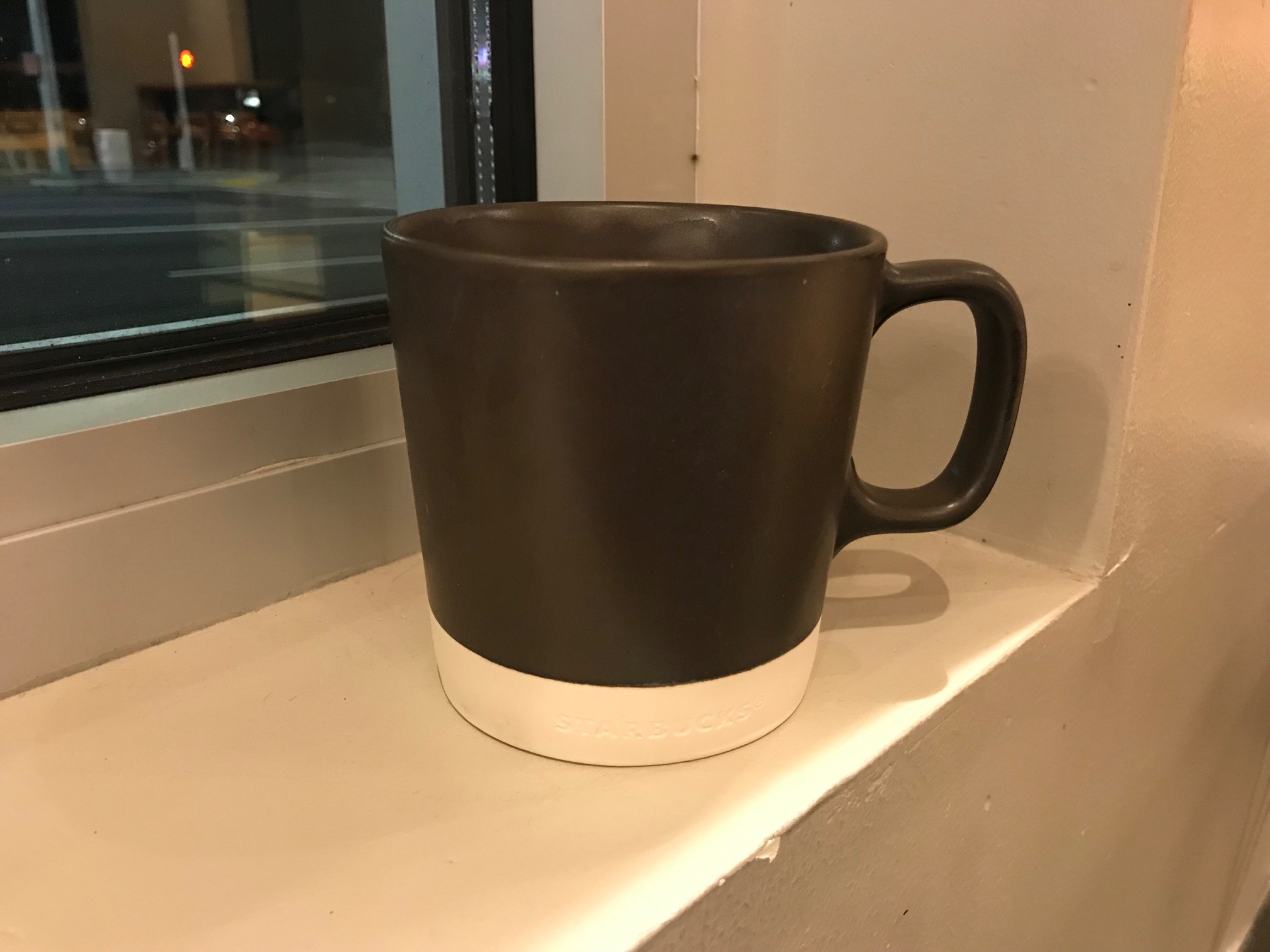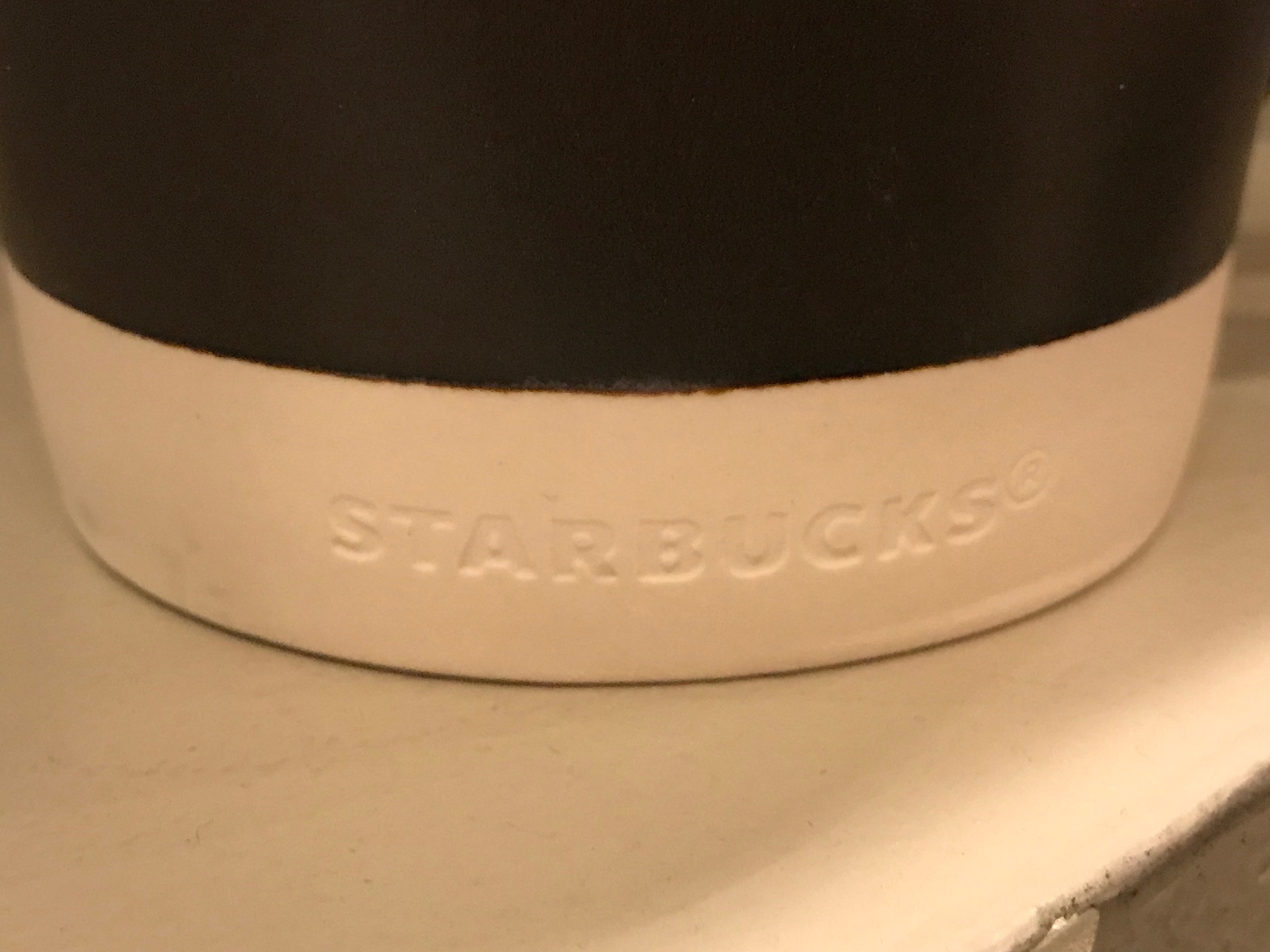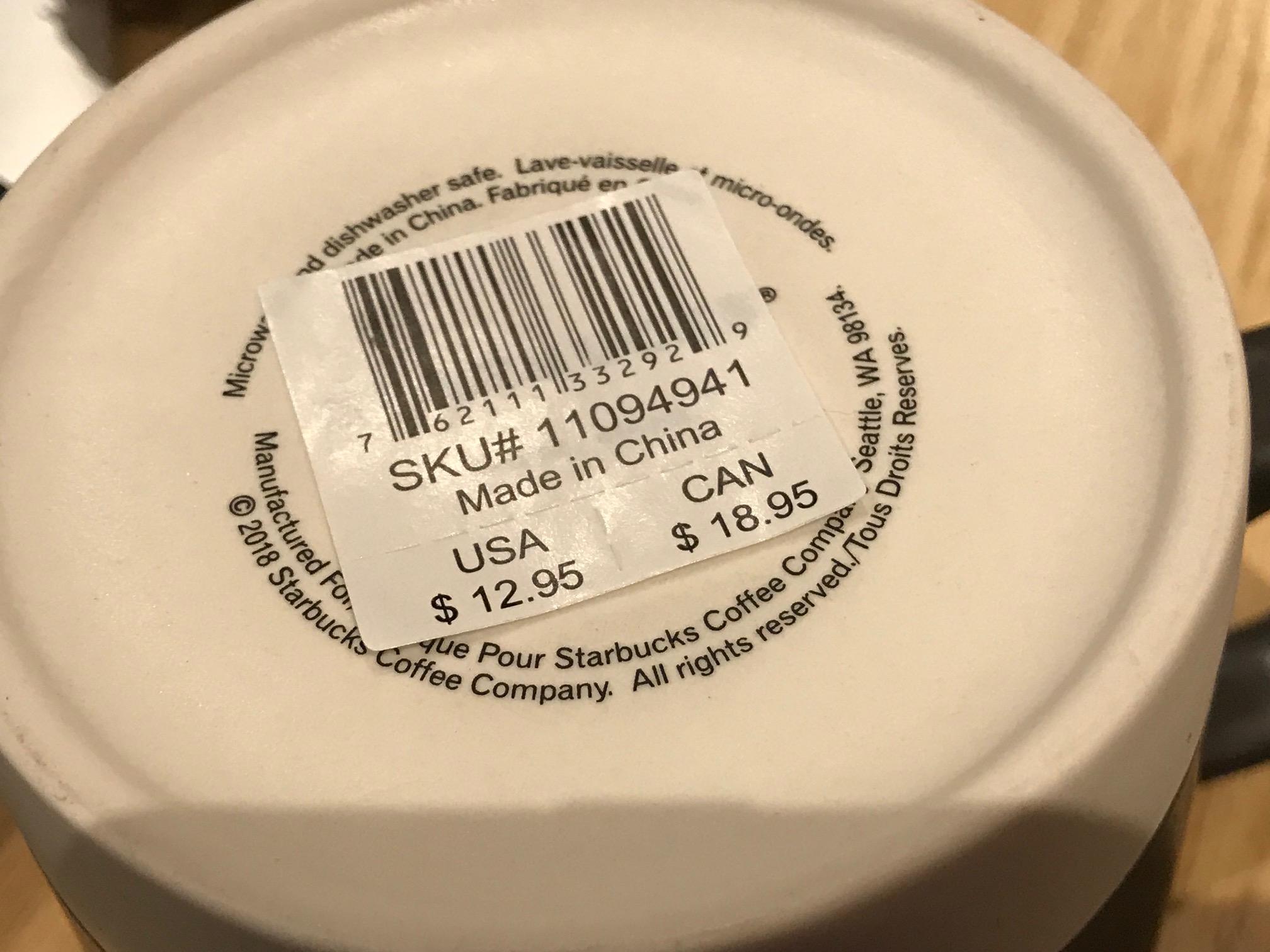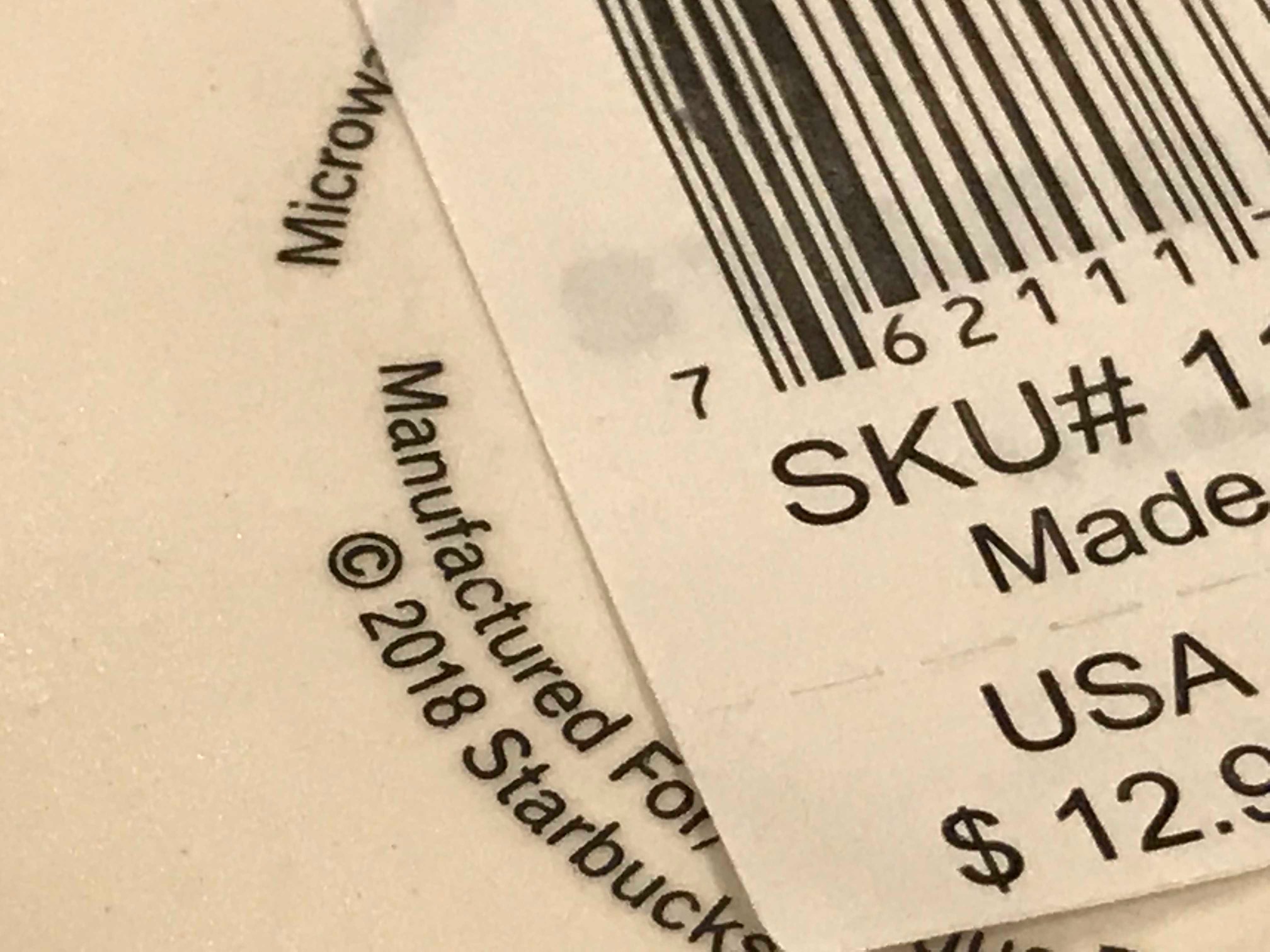2018 Starbucks Brown Ceramic Mug: 513 ppm Lead in the brown glaze – inside and outside. 90 ppm is unsafe for kids.

When tested with an XRF instrument, this 2018 brown-glazed Starbucks-brand mug (purchased new at a Starbucks store in Washington State in 2019) had the following readings:
On a part with just the brown glaze:
- Lead (Pb): 513 +/- 29 ppm
- Barium (Ba): 2,820 +/- 101 ppm
On the unglazed ceramic bottom of the mug:
- Lead (Pb): 129 +/- 19 ppm
- Barium (Ba): 522 +/ 42 ppm
All tests were done for a minimum of 60 seconds each – using a freshly calibrated Niton XRF instrument (an XL3T XRF testing in “Consumer Goods” mode). Tests were repeated multiple times on each component to confirm the results. All test results reported on this blog are science-based, accurate, and replicable.
To read more about the concern for Lead in vintage and new pottery items, click here.
How much Lead is “too much” Lead?
For context, the amount of Lead that is considered unsafe (and illegal) in products “intended for use by children” is anything 90 ppm or higher in the paint, glaze or coating, and anything 100 ppm or higher in the substrate (in the case of a mug, this would be the base clay of the mug.) These standards are for XRF-detectable total Lead content (not Leach-test results – which is a different standard / different type of testing.) Dishes (including mugs) are not regulated in the same way as children’s items – as they are not considered to be “items intended for use by children.” In my opinion, this is a significant regulatory loophole — as, frankly, I don’t know any children who don’t use dishes.
For Lead-free mug choices, click here.
Thank you for reading and for sharing my posts.
As always, please let me know if you have any questions!
Tamara Rubin
#LeadSafeMama 


Never Miss an Important Article Again!
Join our Email List



I have a 12 oz purple cup from 2015 with a ceramic interior. Have you run any tests on this particular cup?